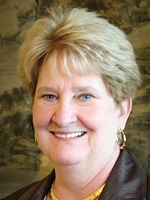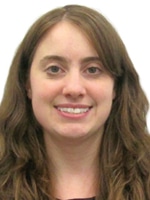October 2023—With respiratory virus season near, those with a close eye on it in August gave the lay of the land for test algorithms, technologies, and forecasts, even as SARS-CoV-2 and RSV cases were rising in parts of the country.
Read More »Upon viral infection, assessing the host nasal epigenome
August 2023—Analyzing the nasal epigenome can shed light on viral infections, strain differences, and potentially infection severity, and for influenza B in particular the results are striking.
Read More »Cytopathology in Focus: Lung cytopathology reporting: WHO system and cases
August 2023—Accurate and timely diagnosis is the cornerstone of effective patient care, particularly in the field of pulmonary pathology. To address the challenges health care professionals face in diagnosing and reporting respiratory conditions, the International Academy of Cytology, together with the International Agency for Research on Cancer, recently developed the World Health Organization Reporting System for Lung Cytopathology
Read More »The who, what, and when of respiratory virus testing
November 2022—In mid-October, flu was picking up, with high levels of activity in Texas, Georgia, the District of Columbia, South Carolina, Tennessee, and New York. Elsewhere, it was still on the lower side, with less known about what was to come but plans in place. And questions, too, about laboratory testing as it relates to SARS-CoV-2, “which is going to be a challenge,” says David Peaper, MD, PhD, D(ABMM), a member of the CAP Microbiology Committee.
Read More »A wait-and-watch season of respiratory viruses
October 2022—Influenza incidence and what it will mean for testing in this respiratory virus season is a wild card, as is how SARS-CoV-2 will evolve. In early September, SARS-CoV-2 prevalence was declining in parts of the United States. “And if you believe in the theory of viral interference,” says Michelle Tabb, PhD, chief scientific officer at DiaSorin Molecular, “it’s leaving the door wide open right now for something else to step in. We’ll see if that’s RSV, or flu A, or if it’s a new COVID variant.”
Read More »In SARS-CoV-2, small steps but big wins
December 2020—By its very nature, the global pandemic has forced laboratories to look far and wide, to bring binoculars, in essence, to their views of supply chains, testing platforms, personnel, and the like. As COVID-19 churns on, some labs are looking through a tinier lens as well. These labs aren’t trading their binoculars for a jeweler’s loupe, exactly, but they have found small and significant success stories closer to home. Like so many others, Erin Graf, PhD, D(ABMM), has confronted a spinning roulette wheel since the pandemic’s start. In a talk she gave in an AMP webinar in October, Dr. Graf posted a vibrantly colored wheel titled, “Which supply chain issue will impact us this week?” Each segment contained a phrase familiar to everyone in 2020, ranging from “swabs” and “sheep blood agar” to “pipette tips” and “chlamydia and gonorrhea tests.” As she surveys these continuous claims on her attention, Dr. Graf says, “I think none of us could have ever thought that COVID would have an impact on all these arms of the testing that we do.”
Read More »Journeys to alternative SARS-CoV-2 strategies
December 2020—In Colorado, Joan Coleman, MBA, MT(ASCP), and her UCHealth colleagues launched an expansive pooled testing program this summer that, after much work, worked well—until it didn’t, thanks to rising positivity rates in October.
Read More »Making peace with saliva, pooled testing
November 2020—Adam Barker, PhD, D(ABMM), was ready to call it quits. For weeks, he had been working to bring saliva-based SARS-CoV-2 testing to ARUP Laboratories and the University of Utah. Dr. Barker, director of ARUP’s COVID-19 rapid response lab, and his colleagues had done studies comparing saliva with nasopharyngeal swabs, which seemed to be following the flight of the passenger pigeon out of existence. They had wrestled with the FDA over emergency use authorization. They’d developed their own transport media, since that supply was also becoming extinct. He had begun building kits for saliva collection and figured out what sample size worked best. Kits had been delivered to collection sites on campus, and staff were being trained in their use. He was, in other words, creating a laboratory success story, one of the many that have been written since March. He was not basking in this fact. “I have to tell you: I lost so much sleep because of saliva,” says Dr. Barker, who is also director, ARUP Institute for Clinical and Experimental Pathology.
Read More »Compass on COVID: What test for whom and when—lab leaders talk
November 2020—Testing saliva, stocking up, and expanding capacity were top of mind when members of the Compass Group convened by Zoom on Sept. 1 for a second COVID-19-related call with CAP TODAY publisher Bob McGonnagle. Antigen testing, too, came up, and the question to answer there, said Susan Fuhrman, MD, of OhioHealth, is why the test is performed and what will be done with the result. That and more—testing for patients undergoing treatment for cancer, flu season—were up for discussion. Others on the call were Greg Sossaman, MD, of Ochsner; Lauren Anthony, MD, and Heather Dawson of Allina; Sarah Province and Julie Hess of AdventHealth; James Crawford, MD, PhD, of Northwell; Stan Schofield and Robert Carlson, MD, of MaineHealth; Sterling Bennett, MD, MS, of Intermountain; John Carey, MD, of Henry Ford; and Pamela Murphy, PhD, APRN, of MUSC Health. The Compass Group is an organization of not-for-profit IDN system lab leaders who collaborate to identify and share best practices and strategies. (For our coverage of their first call with CAP TODAY, see “Compass points chart the pandemic,” September 2020.) Here is what they told us on Sept. 1.
Read More »Flu mounts COVID’s bustling stage
October 2020—Barely a half year into the pandemic’s presence in the United States, history has already begun pressing down on SARS-CoV-2 testing. Like an actor playing Hamlet, it’s been difficult not to feel the burden of past performances when preparing for the months ahead. Now, at the start of fall, that also means readying for the return of influenza. Here, even longer experience has shown that each new season is, indeed, a new season. As in the theater world itself these days, planning for what lies ahead feels tempest-tossed. Plans are being laid. Discussions continue. Creativity abounds, and hard work persists. The season shall unfold. But no one knows how it will look until the curtain—or whatever is passing for one this year—goes up. Poor Hamlet is troubled enough to fill the stage for hours—it is, in fact, Shakespeare’s longest play. Yet he’s just one man. Laboratories this fall are absorbing the slings and arrows of two roles simultaneously. Can they prepare for both parts (think Richard II and III sparring on the same stage) with confidence?
Read More »Uncharted season forges new paths for all hands
October 2020—Planning for respiratory season is always tricky but never more so than this year. “Uncharted territory for influenza” is how Frederick Nolte, PhD, D(ABMM), of the Medical University of South Carolina, describes the prospect of testing for influenza at the scale labs have been testing for SARS-CoV-2.
Read More »Compass points chart the pandemic
September 2020—Between a rock and a hard place. Trying to stay ahead, trying to build inventory. Chasing multiple new testing requests. Anticipating influenza. That’s where laboratory leaders said their labs were in early August when CAP TODAY publisher Bob McGonnagle convened members of the Compass Group on Zoom to share their pandemic experiences. They shared surprise, too, that the situation is what it is: “Not a clue in my mind that this would go past the springtime,” said Stan Schofield, president of NorDx and senior VP, MaineHealth. McGonnagle asked them about the diversion of supplies, the coming flu season, IT support, lessons and long-term changes, and more.
See current issue below for additional COVID-19 coverage or access all COVID-19 articles here.
Oh, the places you’ll go when flu season hits
September 2020—The twinned challenge of testing for SARS-CoV-2 and the upcoming influenza season has a bit of The Cat in the Hat energy running through it. How does one manage to keep Thing One and Thing Two from creating unmitigated chaos? Maybe one doesn’t, not completely. A pandemic-based flu season will by its very nature be protean.
Read More »The laboratory tests of pandemic summer
August 2020—In March, the COVID-19 pandemic came in like a lion—and has yet to leave, like a lamb or anything else. Instead, it roared through April and May in early hot spots like New York City and New Orleans. As lockdowns took hold, the cautious hope was that by summer the virus would be tamed (if not simply go away “like a miracle” or “as the heat comes in,” per several infamous predictions), giving health care providers a chance to exhale before a likely second wave in the fall. Instead, June and July saw other cities and states hit hard in turn, while many places that appeared to have flattened the curve were starting to see concerning upticks in cases.
Read More »Outbreak detection of novel pathogens: Is AI the answer?
July 2020—A machine learning algorithm, used in conjunction with BioFire’s Syndromic Trends, demonstrated a mechanism for near real-time outbreak detection of enterovirus D68, says a study reported in the Journal of Clinical Virology.
Read More »Can NGS replace routine respiratory testing? Study says not yet
March 2019—A small study performed at the University of Utah found that a next-generation sequencing assay cannot replace routine standard-of-care testing to detect pneumonia in immunocompromised patients and determine their treatment. But it could be ordered when an infection is suspected and all other testing has failed to find the etiology.
Read More »One bug or prix fixe? Respiratory pathogen testers weigh in
February 2017—With the number of rapid, accurate molecular assays for respiratory pathogens growing, microbiology laboratories have more options than ever. They include, among others, Meridian Bioscience’s Illumigene assays for group A Streptococcus and pertussis and its newest assay, Mycoplasma Direct, as well as Alere’s assays for influenza A/B, respiratory syncytial virus, and Streptococcus on its i molecular platform. No longer are laboratories limited to inaccurate rapid antigen tests, weeks-long culture, or multi-pathogen panels.
Read More »Flexible ordering may unravel pay snags for respiratory panels
October 2015—The advantages of molecular respiratory viral panelsare accompanied by a challenge for laboratories that find it difficult to secure payment for testing that can cost hundreds of dollars, depending on the number of pathogens involved.
Read More »Algorithm for HIV testing detects more cases, more quickly
December 2013—Screening to detect HIV infection is poised to make a leap into the 21st century. In his presentations on the proposed new screening algorithm, Bernard M. Branson, MD, points out that in 1989, when the now outmoded algorithm was recommended, the telephone booth was a common sight and the “portable” computer was the size of a small suitcase. Dr. Branson, associate director for laboratory diagnostics in the Division of HIV/AIDS Prevention at the Centers for Disease Control and Prevention, also points out that 1989 was the year of the dismantling of the Berlin Wall and the Tiananmen Square massacre.
Read More »Sizing up ‘mega’ multiplex panels for respiratory viruses
May 2013—During the flu season of 2012, patients crowded the emergency room at the University of North Carolina (UNC) Health Care’s Memorial Hospital. They presented with a cough. Congestion. Low-grade fever. In some cases, a sneeze. But in a matter of hours, their clinical pictures diverged: Some patients deteriorated, requiring hospitalization; others remained congested but stable.
Read More » CAP TODAY Pathology/Laboratory Medicine/Laboratory Management
CAP TODAY Pathology/Laboratory Medicine/Laboratory Management












